Last Updated on: September 1, 2025Your IP65 downlights[^1] keep failing sooner than expected in wet areas. This costs you money, damages client relationships, and hurts your reputation. The problem isn’t the IP rating[^2] itself, but the hidden details that manufacturers don’t talk about.
To choose a truly reliable waterproof downlight, you must investigate beyond the IP65 label. You need to verify the long-term stability of the gasket material, confirm the heatsink is engineered for a sealed environment, ensure the driver is also protected, and specify for chemical corrosion, not just water.
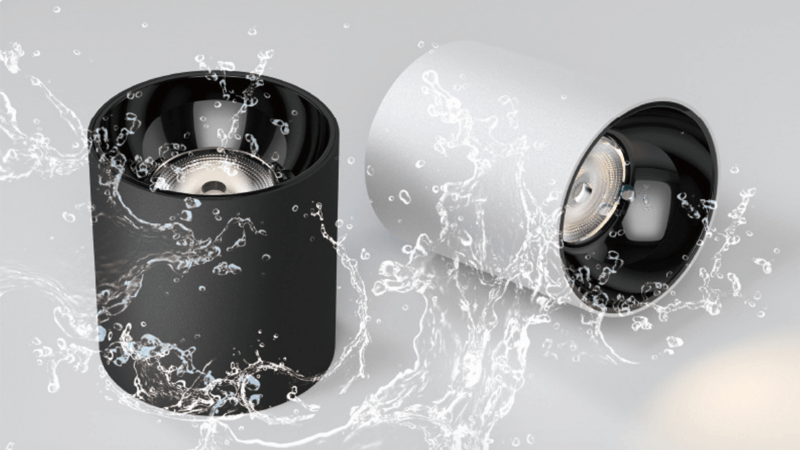
It seems straightforward on paper, but I’ve personally seen hundreds of thousands of dollars wasted on projects because of these exact oversights. A spec sheet can tell you a product passed a test in a lab, but it won’t tell you if it will survive five years above a steamy shower or next to a salty coast. The difference between a downlight that performs and one that fails is buried in the engineering and material choices. Let’s dig into the critical questions you should be asking your suppliers to protect your projects and your business.
Can IP65 downlights be used in a bathroom?
You specified IP65 downlights for a luxury hotel bathroom. A year later, you get a call about flickering lights. The problem isn’t the light in the shower; it’s the weak link hidden above.
Yes, IP65 downlights are essential for wet bathroom zones, but the fixture is only half the system. The real vulnerability is often the standard IP20 driver in the ceiling void, which can fail from a minor leak or condensation, rendering the IP65 light useless.
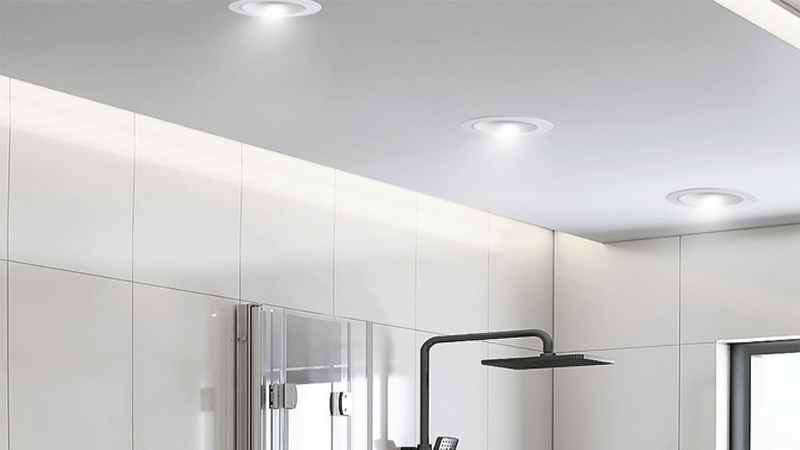
In my experience, this is one of the most common and frustrating points of failure. We focus all our attention on the IP rating of the luminaire head because that’s what we see. But most modern downlights use a remote driver for better heat management and easier maintenance. This driver is usually placed in the ceiling void, which is assumed to be a perfectly dry location. But reality is often different. I’ve consulted on projects where a slow leak from a toilet on the floor above dripped onto the driver. In another case, condensation from a poorly insulated AC duct created enough moisture to short-circuit the electronics. The IP65 downlight below was perfectly fine, but the system was dead.
Rethinking System-Level Protection
For a truly robust installation, you have to think of the luminaire and driver as a single system. Here’s what to look for:
- IP-Rated Drivers: Insist on a driver with its own IP rating, at least IP44. These drivers are fully sealed in their own casing, protecting the sensitive electronic components from dust, condensation, and accidental drips.
- Integral Designs: Alternatively, choose an "integral" or "driver-on-board" (DOB) design where the driver electronics are housed within the main IP65-rated body of the downlight. This eliminates the vulnerability of a separate, unprotected component.
The weak point of any system determines its true strength. In waterproof lighting[^3], don’t let an overlooked IP20 driver be your weak point.
Do bathroom downlights need to be waterproof?
You picked an IP65 downlight for the bathroom, confident in its rating. But after a few years, you notice water stains inside the lens. The rating was real, but it wasn’t permanent.
Yes, bathroom downlights must be waterproof, with the specific IP rating depending on the zone. But a day-one IP rating is meaningless if the sealing materials degrade over time. The real key to long-term waterproofing is the quality of the gaskets used.
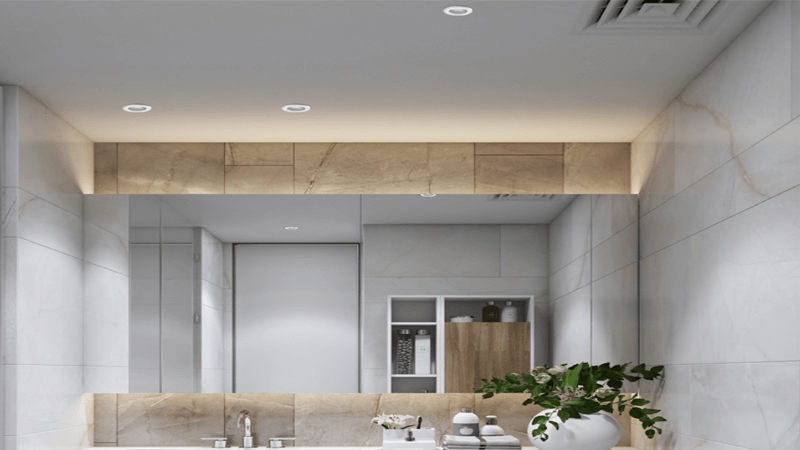
Here is a fact that most junior product managers don’t realize: an IP rating is not a lifelong guarantee. It is a snapshot of performance under perfect lab conditions at the time of manufacture. The real test is years of thermal cycling[^4] in a real-world environment. Every day, the downlight heats up when it’s on and cools down when it’s off. This constant expansion and contraction puts immense stress on the gaskets that create the waterproof seal. In lower-cost products, manufacturers use standard nitrile or low-grade silicone gaskets. These materials harden and lose their elasticity over thousands of heat cycles. They develop what we call "compression set[^5]"—they get squashed flat and stay that way, creating micro-gaps that allow moisture to slowly creep in. Your IP65 luminaire might degrade to an IP54 or worse without you even knowing it, until it’s too late.
The Science of a Lasting Seal
To avoid this, you need to ask your supplier about the specific material of their gaskets.
- Premium Silicone: Look for high-stability, cross-linked silicone. This material has a molecular structure that resists hardening and maintains its "springiness" even after 50,000 hours of use.
- EPDM Gaskets: Ethylene Propylene Diene Monomer is another excellent choice, often used in automotive and roofing for its incredible resistance to heat, UV, and weathering.
A superior gasket might add a small amount to the product cost, but it’s the difference between a product that meets its warranty and one that fails in the field.
Can you put an LED downlight above a shower?
Placing a light directly in a shower seems risky. The intense moisture and direct splashing create a harsh environment. But it is perfectly safe and effective if you understand the hidden engineering challenges involved.
Yes, you can and should put an LED downlight above a shower for best illumination. However, you must use a model rated at least IP65. More importantly, it must be specifically designed to manage the extra heat trapped by its own waterproof sealing.
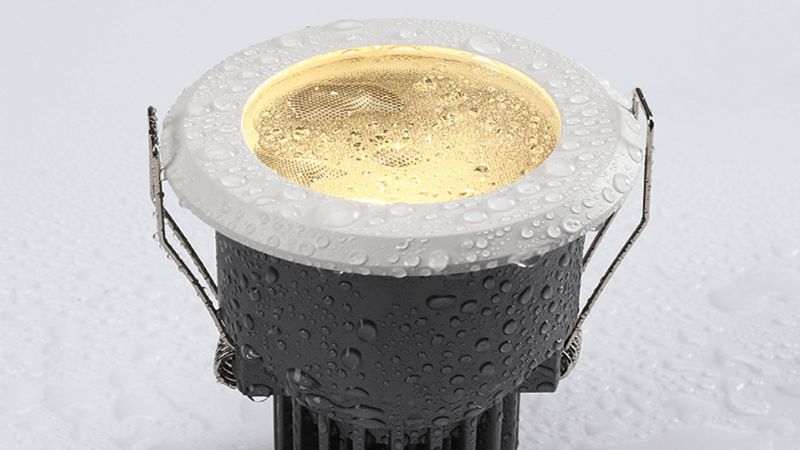
This brings us to the great contradiction of waterproof lighting[^3] design: the thermal paradox[^6]. To make a downlight waterproof, you have to seal it tightly. By sealing it to keep water out, you are also sealing heat in. A standard IP20 downlight relies heavily on air convection—the natural flow of cooler air across its heatsink[^7]—to stay cool. Sealing the unit completely almost eliminates this critical cooling method. All the heat generated by the LED chip must now be managed through conduction and radiation alone. This is where many IP65 designs fail catastrophically. They use a heatsink with a similar mass and surface area to their IP20 counterpart, which is completely inadequate. The result? The LED’s junction temperature (Tj) skyrockets, leading to rapid lumen depreciation[^8] (the light gets dim) and significant color shift long before its rated 50,000-hour life is reached.
Engineering for Heat in a Sealed Box
A properly engineered IP65 downlight must compensate for the lack of airflow.
| Feature |
Poorly Designed IP65 |
Well-Engineered IP65 |
| Heatsink |
Similar size to IP20 model |
Significantly greater mass and surface area |
| Thermal Path |
Standard conduction path |
Optimized paths with high-quality thermal interface material |
| Result |
High Tj, premature failure |
Controlled Tj, meets L80/B10 lifetime claims |
For the same lumen output and warranty, a reliable IP65 downlight must be physically more robust and will therefore be more costly. You aren’t just paying for a seal; you’re paying for the advanced thermal engineering required to keep the light alive.
What does IP65 mean on a downlight?
You see IP65 on a spec sheet and think "problem solved." But what if the "water" your downlight will face is full of salt or chlorine? An IP rating can give a false sense of security.
IP65 means a downlight is totally dust-tight (‘6’) and protected against low-pressure water jets from any angle (‘5’). Critically, this rating only tests for pure water and dust ingress. It offers zero information about resistance to chemical corrosion.
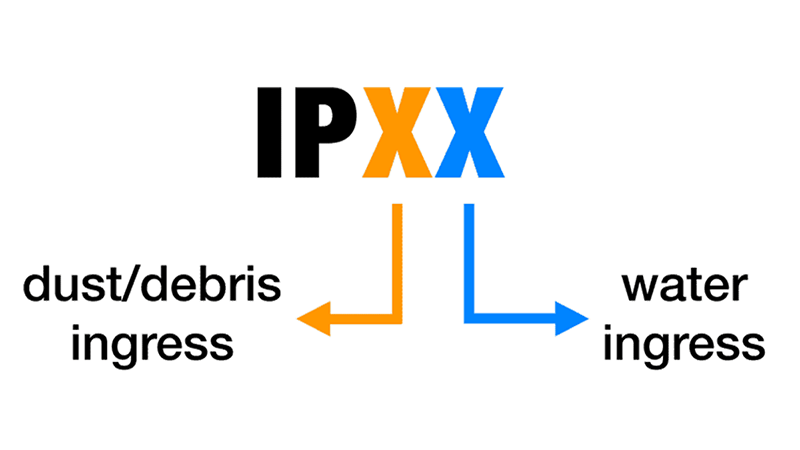
This is a crucial distinction that has led to major field failures. An IP rating is a mechanical test, not a chemical one. I once investigated a project at an indoor pool facility where every IP65 downlight had failed within two years. The seals were actually intact—no water had gotten inside. The failure was external. The chlorine in the humid atmosphere had corroded the powder-coated aluminum housings, causing them to bubble, flake, and literally disintegrate. A similar thing happens in coastal installations where salt spray relentlessly attacks the fixture. In these aggressive environments, the material specification is far more critical than the IP rating. You need to specify a product designed for corrosion resistance.
Beyond IP: Specifying for Durability
Here’s what to ask for in corrosive environments:
- Housing Material: Look for marine-grade aluminum (Alloy 5052 or 6061) or, for extreme cases, 316L stainless steel.
- Pre-treatment: The best manufacturers use a multi-stage pre-treatment before painting. This often includes a chromate conversion coating that chemically alters the aluminum’s surface to make it highly corrosion-resistant.
- Hardware: All external screws and fittings must be 316 (also called A4) marine-grade stainless steel to prevent rust spots and structural failure.
Asking for "IP65" is easy. Asking for "IP65 with a chromate pre-treatment and 316 stainless hardware" is what makes you a true pro.
Conclusion
Choosing the right waterproof downlight means going beyond the spec sheet. It requires understanding material science, thermal management, system design, and the true nature of the installation environment.
---
[^1]: Explore this resource to understand how to maximize the performance of IP65 downlights in challenging environments.
[^2]: Understand the significance of IP ratings and their limitations in assessing waterproofing.
[^3]: Explore best practices for choosing waterproof lighting that meets your project needs.
[^4]: Explore the effects of thermal cycling on the longevity of downlights and their seals.
[^5]: Learn about compression set and its impact on the waterproofing of downlights over time.
[^6]: Explore the challenges of managing heat in waterproof downlights and how to overcome them.
[^7]: Discover how heatsinks are engineered to manage heat in waterproof downlights effectively.
[^8]: Find out the factors that lead to lumen depreciation and how to mitigate them.